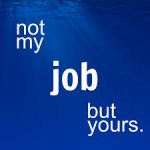Introduction
As someone who works with a wide variety of startups and small companies as the in-house expert interfacing between outside patent lawyers, I have found it helpful to compare and contrast the various legal practice styles encountered, at least because I strive to continuously improve the IP strategy consulting services that I provide my clients. Recently, I have noted that there often appears to be a profound lack of alignment between the desired outcomes that my clients seek from their patent efforts and the business models of many of the lawyers we encounter.

These lawyers seek to engage clients like mine,



 In my role as the IP Strategist for a number of companies that do not employ in-house patent counsel, I am charged with making sure that my clients’ patenting efforts are in tune with their desired business outcomes. This means that instead of focusing on the drafting and prosecuting of patent applications that form the basis of most patent attorneys’ practices, I work at the front end of the patenting process to design patent strategies that will enhance my clients’ business value first and foremost. When alignment is created with business goals, subsequent patenting efforts will necessarily result in protection that matters to the value of the company. In this regard, I have a number of tools in my “Patent Strategy Toolbox” that I deploy regularly when developing patent prosecution recommendations. Notably, when I mention these tools to new clients, I
In my role as the IP Strategist for a number of companies that do not employ in-house patent counsel, I am charged with making sure that my clients’ patenting efforts are in tune with their desired business outcomes. This means that instead of focusing on the drafting and prosecuting of patent applications that form the basis of most patent attorneys’ practices, I work at the front end of the patenting process to design patent strategies that will enhance my clients’ business value first and foremost. When alignment is created with business goals, subsequent patenting efforts will necessarily result in protection that matters to the value of the company. In this regard, I have a number of tools in my “Patent Strategy Toolbox” that I deploy regularly when developing patent prosecution recommendations. Notably, when I mention these tools to new clients, I
 Last week, an en banc Federal Circuit (that is, the majority of the sitting judges, not just the usual three judge panel),
Last week, an en banc Federal Circuit (that is, the majority of the sitting judges, not just the usual three judge panel), 


